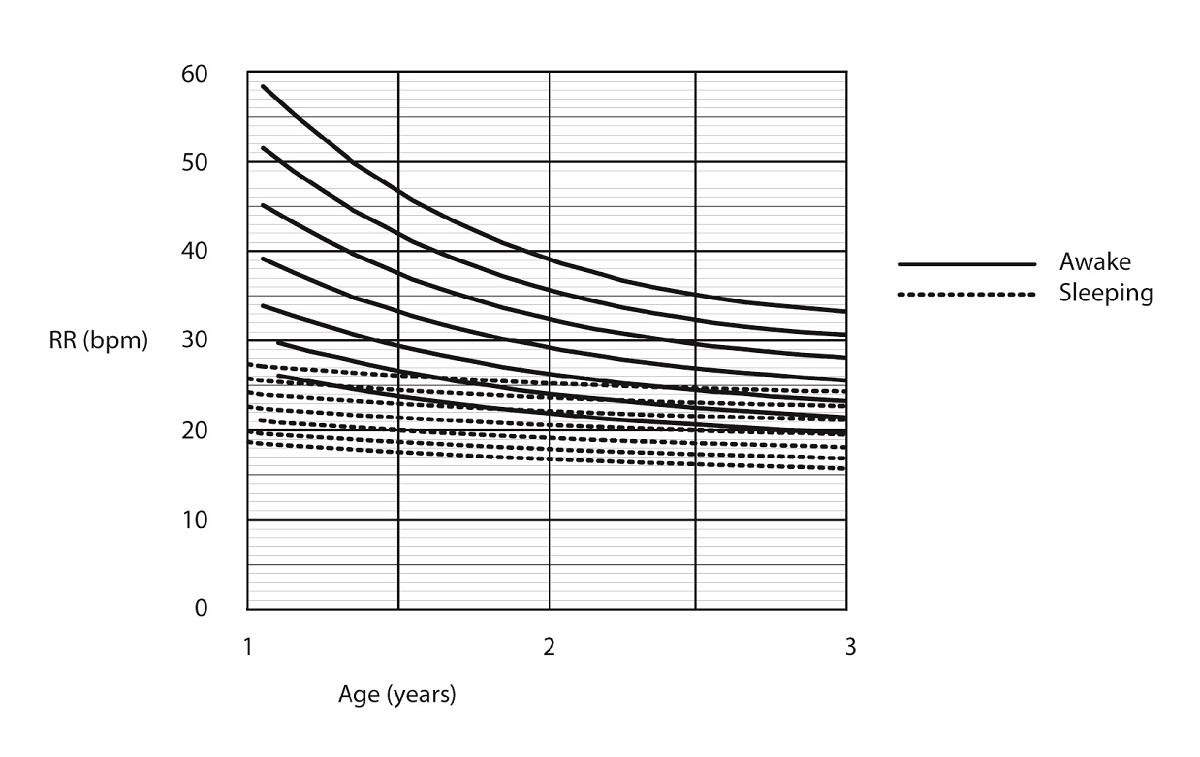Background: Elevated respiratory rates (RR) have been described in several disease states, such as pneumonia, asthma and bronchiolitis. Despite this, there are few studies defining the range of RR found in healthy children. Available age percentiles for RR have been generated using methods that have the potential themselves to alter the rate. Aim: The aim of this study was to develop accurate percentile charts of RR specific for age in healthy children for potential use in pre-hospital care (first-aid), clinical medicine and for reference in respiratory research. Method: A newly developed optical respiratory sensor was used to measure RR which placed no restrictions on respiratory excursion. This technique enabled recording in awake children without the artefact of the observer’s presence on the subject’s RR. A cross-sectional sample of healthy children was obtained from maternity wards, childcare centres and schools in Brisbane, Queensland, Australia. Results: RR were observed in 560 awake and 103 sleeping children of which data from 343 awake and 94 sleeping children was used to create reference ranges for healthy children from newborn to 13 years of age. The recorded rates were significantly higher when children were awake compared to asleep. During quiet sleep, RR decreased from 40 (interquartile range 7) bpm at one month to 20 (interquartile range 3) in children aged 3 years. In awake children, RR ranged from a median of 40 bpm (interquartile range 18) at 1 year to 12 bpm (interquartile range 11) at 13 years respectively. Conclusion: The optical sensor was found to be an appropriate respiratory transducer, capable of measuring RR and reducing artefact by the subjective responses of alert children. The centile charts will be helpful as an aid to detecting abnormal RR in children and will contribute to further systematic reviews related to this vital sign.

